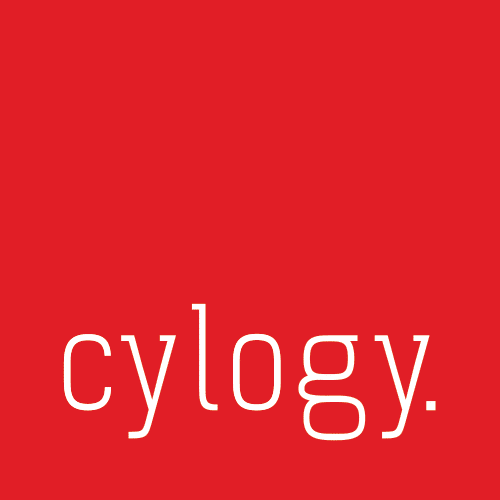Choosing a Digital Experience Platform (DXP) can be difficult, as there are many criteria to consider when making your choice. The DXP market has continued to evolve rapidly over the past few years with leading vendors vying for market share by continuing to invest in their platforms, while also extending their features by buying up niche providers and then integrating these into existing offerings. There is also more flexibility in the features that are available as standalone SaaS offerings, allowing customers to build up their own best-of-breed ecosystem. This level of choice is great news for marketing teams.
A DXP is a major investment of strategic importance – it’s likely to be underpinning your main go-to-market digital channels for several years. Customer experience is critical, so it’s worth getting it right. Each organization needs to spend time finding the DXP that best fits their requirements, budget, future aspirations and existing martech stack.
To help marketing teams make the right choice, we’ve sponsored a Digital Experience Platforms Market Guide produced by our partners at Simpler Media Group / CMSWire. The guide is available for free download and provides an excellent overview of the main DXP vendors, with a detailed individual profile of each.
In this post we’re going to cover eight of the elements you need to consider in choosing the right DXP, most of which are covered in the guide.
1. Range of features
When you’re considering which DXP to select you’re likely to have a set of requirements that meet your needs. Having a detailed list of these – and knowing which are the essential “Must Haves” – means that you can then map these to the features of your DXP and start to compare the suitability of different solutions.
Most of the leading DXPs are feature-rich and likely to have elements in place that will tick some or even most of your boxes. At the beginning of the DXP guide there is a list of 23 different types of features that appear in core DXP platforms, so the extent of features to add to your martech stack is extensive.
If a platform doesn’t have the feature you need, it’s always worth considering the compatibility of your DXP with other solutions, as you’re likely to be able to fill any gaps with a third-party solution. Moreover, as platforms evolve to support headless publishing and even to a composable DXP model with more features available as separate microservices on a SaaS basis, it means you can start to even mix and match features from different providers.
2. Vendor suitability
The suitability of a vendor is a key non-functional requirement for any major buying decision. Your organization may already have due diligence in place to check the suitability of a supplier possibly as part of your procurement process, and you may have a related checklist in your RFP process.
A key consideration is the stability and independence of the supplier. Is the DXP supplier you are investing in likely to be acquired or in danger of going bust? The former is not necessarily negative as it can result in more investment for your platform-of-choice, but the risk of a discontinued platform is something to be avoided.
Another consideration is whether the vendor is a good fit with you in terms of values, aspirations and size; if you’re a very large organization you might want to ensure you work with a larger provider who can adequately support you, and if you’re smaller, a provider with a more personal touch might be preferred. In the DXP guide, there is a profile of each supplier covering aspects such as history, recent acquisitions, size and more.
3. How well it plays with others
In the DXP market guide a major section of each vendor profile is titled “Plays well with others”; this covers the ability for a platform to work with the other components of your martech stack. If you’re investing in a DXP it is likely that you will have existing digital marketing solutions and applications that the platform will need to work alongside from day one; if not, it can lead to extra costs, features not working properly or the need to replace other solutions.
Moreover, you will also want to ensure your DXP can help you evolve your martech stack in the future rather than limit your options. The DXP market guide vendor profiles cover some general notes on stack integration abilities but then also lists all the individual content and experience APIs for each DXP. This detailed view is important to ascertain how your DXP might sit within your broader customer experience ecosystem.
4. Overall partner ecosystem
With the major DXP vendors it is likely that you’ll be working with a partner agency who can support you with your implementation, support and maintenance, and other specific projects. The maturity, extent and reach of a platform’s partner network is an important consideration because it can directly impact the success of your digital projects.
When looking at a partner network you will likely want to consider:
· How strong does the certification or verification element of the network appear to be – will I be working with an agency and individual developers who truly know the platform?
· Are there agencies in my country, locality and time zone that I can work with?
· How wide is the partner network – are there enough agencies in my locality meaning I have a choice to find the best agency and ensuring costs are competitive?
· Does the partner ecosystem mean that there are also extra plug-ins and tools that will work with my DXP?
Major DXPs like Sitecore and Optimizely have very mature and large partner ecosystems. It’s also a section we cover in some detail in each of the vendor profiles within the DXP market guide.
5. Strengths and weaknesses
Every platform and its constituent features will have its own strengths and weaknesses. Getting commentary on what these are, for example from reports like the DXP market guide, as well as real-world feedback from current users of the platform will help you to evaluate the suitability of each DXP.
6. Cost and licensing options
Cost and related licensing options are going to be a major factor in choosing any solution. Working out the true total costs of a DXP can be very hard to ascertain due to a variety of factors including a lack of vendor transparency, the costs from implementation partners, hosting, support and maintenance contracts, any infrastructure dependencies, training, the need to hire additional resources and the range of features in scope.
You will also want to look at the costs over three years or more, as year two costs can look very different to year one. All these factors make doing like-for-like comparisons on the likely total cost of ownership between DXPs quite difficult.
In terms of licensing options, generally the influence of cloud and SaaS offerings has meant there are more flexible options with less lock-in for DXPs. This means that there can also be a more granular approach to costings too.
7. Other practicalities
There are a range of other practicalities that may also be a consideration for your choice of DXP, including:
· Hosting options (AWS, Azure etc.) and even managed services
· Security standards and other related arrangements
· The location of servers where your data is held
· Deployment model
· Accessibility standards
· And more!
8. Product roadmap and trajectory
Investing in a DXP solution tends to be a multi-year investment, so it’s important to consider what the future holds. Here, you’ll want to consider:
· The specific product roadmap and what’s coming up on the horizon which can also give an idea of ambition.
· The release cadence – how often can you expect to have new features installed?
· The overall trajectory – what is the strategy and direction of travel for the platform and how will this impact you?
Download the free DXP Market Guide!
Download the free 90-page Digital Experience Platforms Market Guide now.





